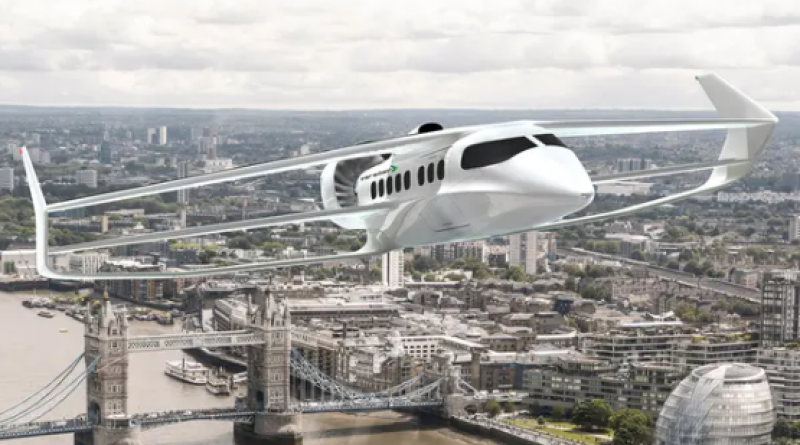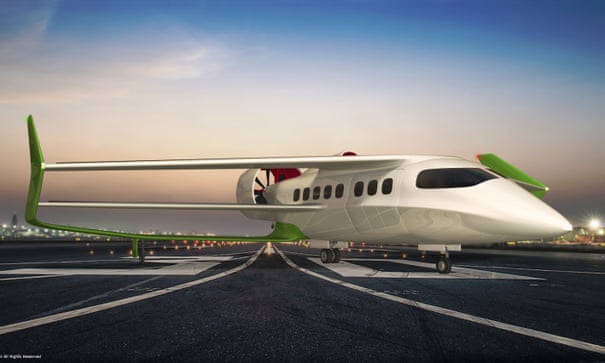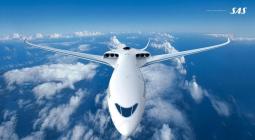Will a British bioelectric hybrid plane really take off?

Boris Johnson set the goal, but the developers of the Beha had to get private investment for their unique craft.
In the shadows of the old Spitfires and Hurricanes that helped win the Battle of Britain, Faradair, a UK startup operating from the historic Duxford airfield, is hoping to help Britain fight the new war against climate change by developing a revolutionary 18-seat bioelectric hybrid plane which will eventually, hopes its designer, be carbon neutral.
The plane, currently in development, will use electric motors to power take-off and landing, the part of any flight with the highest noise and carbon emissions. Once cruising, at a speed of about 230mph, the plane will switch to its turbogenerator, powered by biofuel, which will also recharge the motors with assistance from solar panels, ready for the aircraft’s descent.
The short-hop bio electric hybrid aircraft (Beha), the first aircraft produced since the 1920s to have a three-winged box design, will be able to operate cargo, passenger and special operation flights. It will have a palletised interior, allowing it to be converted from passenger to cargo use in just 15 minutes.
Working with a consortium of partners to deliver 300 of the planes by 2030, Faradair chief executive Neil Cloughley admits that it might not be “the sleekest, the sexiest, nor the fastest, the highest or the furthest flying aircraft”, but believes it will prove itself in other ways. The aircraft will sell itself based on its low emissions, minimal operating costs and versatility.
With a ducted fan and a box wing design, the Beha will trade higher speed for lower noise emissions and greater lift. The company hopes its ultra-quiet plane will be able to operate from airports such as London City, which have noise related night-time flight bans. Its wing is designed to generate huge amounts of lift, which will allow it to operate from runways that are shorter than 1,000ft (300 metres), despite the heavy battery technology on board.
The wing is also designed with future technologies in mind. Faradair says the space between each wing would be the perfect place to locate more efficient batteries of the future, with the additional benefit of natural cooling from the passing air.
Boris Johnson recently declared: “Jet Zero, let’s do It! [Let’s] set ourselves the goal now of producing the world’s first zero-emission long-haul passenger plane.” But Cloughley says that, although he hopes the plane will eventually be carbon neutral, to begin with the Beha will fly on a turbogenerator during its cruising phase.

“All electric wasn’t going to be possible straight off the bat,” he said. “The power density simply isn’t there for anything of any meaningful size. That means that we have to go hybrid; it means that sustainable aviation fuels [SAFs] will be the ideal.”
SAFs can be made from a wide variety of materials such as waste oils, surplus food and feedstock. The main benefit is that they recycle existing carbon, rather than releasing new carbon. However, this is still a new industry and SAFs currently form just 6% of global jet fuel. In its Destination 2050 report, Europe’s aviation sector said this could rise to more than 80% by 2030, but that this would require “strong political support”.
The UK government is investing in SAFs, most recently with its £15m Green Fuels, Green Skies competition. But greater levels of support will be needed if it wants to see the possible 83% of global jet fuels coming from SAFs by 2030.
Neil Cloughley has criticised the lack of government support offered to new, smaller companies such as his. Speaking about the Beha he said: “The reason why the aircraft isn’t flying today is because we couldn’t attract the support we needed. We pitched the idea of hybrid-electric flight, sustainable flying, green flight, to those responsible for aerospace innovation funding back in December of 2015.” He has now raised private funding for the development stage.
Powering the most carbon-intensive part of the flight with electric motors means the Beha will produce lower emissions than conventional like-for-like regional jets. These savings will also be boosted by the use of lightweight carbon composite materials. However, the degree to which emissions are cut will also rely on access to SAFs and will become clearer after prototype testing.
Hybrid technology will also enable a wider rollout of the Beha, removing the need for airports to install expensive electrical or hydrogen recharge facilities. This is especially important for the regional market that Faradair is targeting, where many airports already struggle to operate at a profit.
Another benefit of a hybrid approach is that while battery technology isn’t currently able to power the entire flight, it is constantly improving. So the proportion of the flight powered by electric motors can be increased without changing the aircraft design.
Bernie Baldwin, an aviation specialist and former head of publications at the Royal Aeronautical Society, is optimistic about the technological challenge. He points out that using an electric engine has already been proven in a smaller plane, the Cessna 208B Caravan. “Given the partners it has gathered, there seems to be no reason the Beha should not succeed technologically.” He warned however, that other electric planes were also being worked on, and would create serious commercial competition for the prototype.
Clare Jackson, a senior consultant at Gemserv, agrees that hybrid aircraft could prove useful, “but only as a transitional solution”. She adds that the “industry [is] working hard to scale up hydrogen cell solutions”.
Faradair hopes to have the Beha flying passengers by 2026, in which case, you’ll have to keep your eyes peeled, as your ears won’t be of much use in locating this ultra-quiet plane.
18 March 2021
The Guardian




